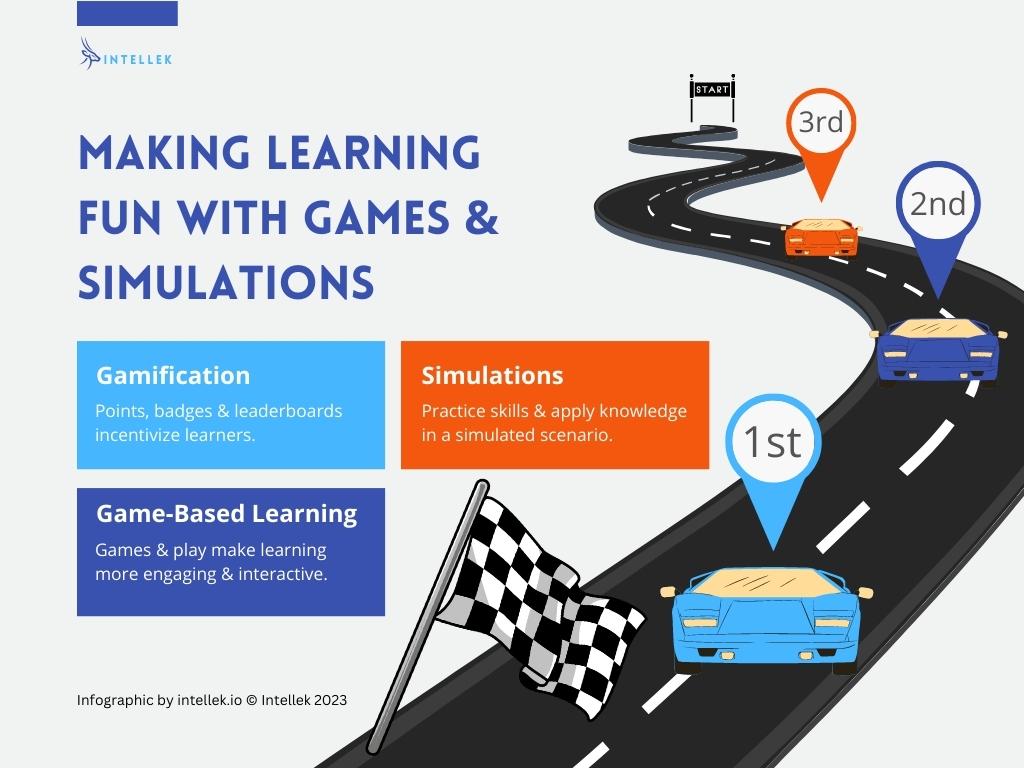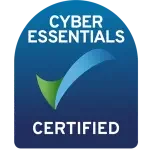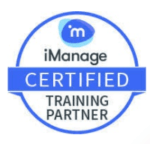
The world of learning and education is rapidly changing, and technology is playing a crucial role in shaping the future. From online training programs to virtual and augmented reality, learning technology and educational technology are offering new and exciting ways to acquire knowledge and skills.
Whether you are a student looking to advance your education or an employee looking to upskill, the benefits of learning technology are undeniable.
This article will explore the various benefits of leveraging this tech, including personalized and adaptive learning experiences, gamification and simulations, and the role of artificial intelligence and machine learning.
Additionally, we will discuss the importance of creating a culture of continuous learning in the workplace, and the potential impact of automation on the future of work.
Get ready to dive into the exciting world of learning technology and educational technology!
IN THIS ARTICLE...
Understand the Basics of Learning & Educational Technology
Learning technology and educational technology are two of the fastest-growing areas in the modern world, with both individuals and organizations seeking to leverage new technologies to improve education and training.
Both learning technology and educational technology are concerned with the use of technology to facilitate the process of learning.
But what’s the difference?
Learning Technology Vs Educational Technology
Learning technology and educational technology are broad terms that encompass a wide range of tools and techniques for facilitating the process of learning.
While the two terms are often used interchangeably, they do have some distinct differences. For example, learning technology is generally more focused on the technology itself, while educational technology is more focused on the pedagogical approach to learning that the technology supports.
What is Learning Technology?
Learning technology refers to the use of technology to support and enhance the learning process. This can include online learning platforms, digital tools, and learning management systems (LMS) designed to provide an efficient and effective way for learners to acquire new knowledge and skills.
At its core, learning technology is concerned with using technology to improve the way we learn, whether through online training programs, virtual and augmented reality, or other innovative methods.
What is Educational Technology?
Educational technology, on the other hand, is focused on using technology to support the overall goal of education, including the development of digital resources, online learning environments, and other tools that help educators and students to engage with course material.
Generally speaking, educational technology refers to the use of technology in the field of education to enhance teaching and learning experiences. This includes the use of digital tools, devices, and software to create engaging, interactive, and effective learning environments.
Common Goals of Learning Tech & EdTech
However, both areas of technology share a common goal, which is to improve the learning experience for students and employees and to make education and training more effective, efficient, and accessible.
Whether you are a student, educator, or employee, the basics of learning and educational technology are worth exploring. With a better understanding of these technologies, you can gain a competitive advantage and unlock your full potential as a learner.
Whether you are looking to upskill, improve your training programs, or support the educational development of your students, the opportunities offered by learning and educational technology are worth exploring.
What are the Benefits of using Learning & Educational Tech?
The benefits of using educational technology include increased engagement and motivation for learners, improved access to information and knowledge, enhanced collaboration and communication, and the ability to personalize the learning experience.
How is Educational Tech different from Traditional Classroom Teaching?
Educational technology differs from traditional classroom teaching methods by allowing for a more personalized and flexible learning experience. With the use of technology, learners can access information and engage in learning activities at their own pace, anywhere, and at any time.
What are the Potential Drawbacks of using these Technologies?
While learning and educational technology offer many benefits, there are also some potential drawbacks to consider:
- Cost: Implementing and maintaining learning and educational technology can be expensive, and it may be difficult for smaller organizations to justify the investment.
- Technical Challenges: Learning and educational technology can be complex, and there may be technical challenges associated with implementation and use. There may also be compatibility issues between different platforms and systems.
- Lack of Interaction: While technology can provide a wealth of information, it can also limit the opportunities for interaction between learners and teachers. This can make learning less engaging and less effective.
- Decreased Attention Span: The use of technology in learning can also lead to decreased attention spans and decreased ability to focus for extended periods of time.
- Privacy Concerns: There may also be concerns about the privacy and security of personal information and learning data, as well as the ethics surrounding the collection and use of this data.
It’s important to carefully consider these potential drawbacks and weigh the benefits against the risks when making decisions about the use of this technology.
How to Avoid Potential Drawbacks of using Learning Technologies
To avoid the potential drawbacks of using educational and learning technologies, organizations should take the following steps:
- Conduct a thorough needs assessment before implementing a technology solution to ensure it aligns with the organization’s goals and objectives.
- Choose technology solutions that are user-friendly and accessible to all learners, regardless of their level of technological literacy.
- Ensure that the technology infrastructure is robust and secure to prevent data breaches or other security incidents.
- Provide adequate training and support for both instructors and learners to help them effectively use the technology.
- Regularly evaluate the effectiveness of the technology and make adjustments as needed to ensure it continues to meet the organization’s needs.
- Foster a culture of continuous learning and collaboration to encourage employees to actively engage with the technology and share their knowledge with others.
By taking these steps, organizations can maximize the benefits of educational and learning technologies while minimizing any potential drawbacks.
The Power of E-Learning & Online Training
E-learning and online training are two of the most significant advancements in the field of learning technology. With the rise of remote work, e-learning, and online training have become increasingly important as a way for employees to receive training on their own schedule.
E-learning and online training offer the flexibility and convenience of being able to study from anywhere and at any time, empowering organizations to keep remote employees engaged and thriving with cutting-edge learning technology.
Personalized Learning with AI & Machine Learning
Artificial intelligence and machine learning are playing an increasingly important role in creating personalized and adaptive learning experiences.
With the use of AI and machine learning, learning systems can track the progress of individuals and adapt the training content to their specific needs. This results in a more effective and engaging learning experience.
For instance, a company in the tech industry could use AI and machine learning to provide its employees with personalized and adaptive training programs. The company’s learning management system could analyze employees’ performance data and adjust the training content to their strengths and weaknesses. This could include customized learning paths, personalized recommendations for further learning, and real-time feedback on their progress.
With AI and machine learning powering the training, the employees will receive a more engaging and effective learning experience, leading to better performance and professional growth.
Making Learning Fun with Games & Simulations
Gamification, game-based learning, and simulations are also playing an important role in making learning more engaging and interactive.
- Gamification refers to incorporating engaging game-like elements into a non-gaming environment to drive motivation and participation in learning. This can involve using points, badges, leaderboards, and other elements found in games to incentivize learners.
- Simulations offer a virtual environment that allows learners to practice their skills and apply their knowledge in a realistic, simulated scenario. This approach provides a hands-on, experiential learning experience that can deepen understanding and improve performance.
- Game-Based Learning is a teaching method that leverages the elements of games and play to make learning more engaging and interactive. This principle utilizes game mechanics, such as points, levels, challenges, and rewards, to motivate and challenge learners in reaching their educational goals.
Why use Games in Learning?
By incorporating game-based learning, gamification, and simulations, the experience of learning becomes more enjoyable and interactive.
Learners can put their skills to the test in games and simulated scenarios, providing them with a sense of accomplishment and a deeper understanding of the material. This helps to create a more positive and memorable learning experience, which can lead to better retention of information and improved performance in the workplace.
If so desired, gamification can ignite a fierce level of competition among employees, inspiring them to constantly strive for excellence and become the top learners in the company.
These approaches make learning fun and help to keep learners engaged.


Integrate the Best of Third-Party Content into Your LMS
Another benefit of learning technology is integrating third-party content into your learning management system (LMS) or digital adoption platform (DAP). This could include content from providers such as Viva Learning, LinkedIn Learning, and our own eLearning catalog.
By integrating this content into your LMS, you can offer learners a wider range of training opportunities and provide a more comprehensive learning experience.
At Intellek, we understand the importance of incorporating the best third-party content into our learning solutions. That’s why we have seamlessly integrated leading content providers into our eLearning catalog, allowing organizations to offer their employees a rich and diverse range of training opportunities.
With Intellek LMS, learners have access to a comprehensive and integrated learning experience, which enhances their overall skills and knowledge.
We believe in empowering organizations to provide their employees with the best possible learning experience and integrating third-party content is a key part of this effort.
Immersive Training with Virtual & Augmented Reality
Virtual reality and augmented reality offer the potential for immersive training experiences in fields such as healthcare, manufacturing, and engineering.
For example, virtual reality can be used to provide hands-on training for surgical procedures, while augmented reality can be used to provide interactive training for manufacturing processes.
Virtual and augmented reality not only provide an interactive experience but also offer a new level of immersion and engagement for learners. This technology can help bridge the skills gap between theory and practical applications, making the learning process more realistic, meaningful, and memorable.
With virtual reality, learners can experience hands-on training in a safe and controlled environment without any physical risk, making it ideal for fields such as healthcare, where high stakes are involved.
Augmented reality, on the other hand, can superimpose digital information onto the real world, allowing learners to see the connection between their actions and the consequences in real time. This makes it ideal for training in fields such as manufacturing where the learning process involves complex processes and machinery.
Virtual reality and augmented reality offer powerful tools for organizations to deliver impactful, engaging, and effective training to their employees.
Measuring Success with Data Analytics & Metrics
Learning technology also provides the ability to use data analytics and metrics to track the progress of employees and improve the effectiveness of learning programs.
Data analytics can be used to measure the effectiveness of training programs and to identify areas where improvements can be made.
This data-driven approach helps ensure that learning programs deliver the results that organizations need. Helping administrators to gain support and secure a budget for future development, by showing the value and ROI of the learning function with LMS tools to help you measure ROI for training.
Streamline Employee Onboarding for Maximum Productivity
One of the key benefits of learning technology is its ability to streamline the employee onboarding process and shorten the time-to-productivity.
For example, a law firm could use a digital adoption platform to provide new hires with interactive training modules that cover the firm’s policies, procedures, and best practices.
The platform could also include interactive simulations and gamified elements to keep the training engaging and help new employees retain information better.
By the end of the onboarding process, new hires will have a clear understanding of what is expected of them and how to perform their duties effectively, reducing the ramp-up time and allowing the firm to start realizing the benefits of their investment in new talent sooner.
By using DAP technology to deliver training and support during the onboarding process, organizations can get new employees up to speed more quickly, which helps to improve overall productivity.
Prepare for the Future of Work with Continuous Learning
In today’s rapidly changing job market, it’s increasingly important for employees to stay up-to-date with new skills and technologies.
The creation of a culture of continuous learning is essential for organizations to remain competitive in the future of work. This requires the use of collaboration and communication tools to facilitate understanding and knowledge sharing among employees.
With Intellek’s exceptional support, cloud-based solutions, and innovative learning content, organizations can easily cultivate a culture of ongoing development and ensure their employees are always ready for the future.
Brent Taylor attests to the impact Intellek has had in establishing and maintaining a culture of continual learning within his organization…
“Intellek really helped us establish and maintain a culture of continual learning. They are exceptional at developing and supporting their learning content and systems around the needs of their clients!”
Brent Taylor – L&D National Manager at McMillan LLP
The future of work demands that employees be equipped with the latest skills and technologies to remain competitive. Embracing a culture of continuous learning is essential for organizations to succeed.
By leveraging the power of collaboration, communication, and blended learning tools, companies can cultivate an environment where employees are encouraged to learn and share their knowledge with each other.
How has the Pandemic Affected the use of EdTech?
Brent also said, “We would not have gotten through these past few months (during Covid-19) without our partnership with Intellek”.
The COVID-19 pandemic has accelerated the adoption of educational technology. With the shift to remote learning, EdTech has become a crucial tool for delivering learning and training materials to students and employees. It has also enabled learners to continue their education or training from the safety of their own homes.
How is Learning Technology Changing the Way We Learn?
Learning technology is changing the way we learn by providing access to a wide range of digital resources, online learning platforms, and interactive learning experiences. This is making it easier for learners to acquire new knowledge and skills and to stay up-to-date with new technologies and best practices in their fields.
Staying Relevant in an Automated World
The rise of automation is also having a significant impact on the future of work, and it’s increasingly important for employees to upskill and reskill to stay relevant in a rapidly changing job market.
Learning technology can help employees become digitally fluent, acquire new skills and knowledge, and stay ahead of the curve when it comes to automation and emerging technologies.
By investing in learning tech and creating a culture of continuous learning, individuals and organizations can prepare for the future of work and ensure long-term success.
Embrace the Benefits of Learning & Educational Technology
Learning technology and educational technology are playing a crucial role in the modern world, and offer a wide range of benefits for individuals and organizations alike.
From personalized and adaptive learning experiences to improved employee onboarding, the power of learning technology is undeniable. By embracing this technology, individuals and organizations can stay ahead of the curve and prepare for the future of work.
Whether you are looking to improve your own skills or build a more effective training program, the opportunities offered by learning technology and educational technology are well worth exploring.
Intellek (formerly TutorPro) is a founding member of the learning technology industry. With a presence in the USA, UK, Canada, and the EU – for over 30 years we have pioneered the development of cutting-edge eLearning software and online training solutions, with a large and diverse portfolio of international clientele.
Disclaimer: We use all the tools available including generative AI to create relevant and engaging content.






